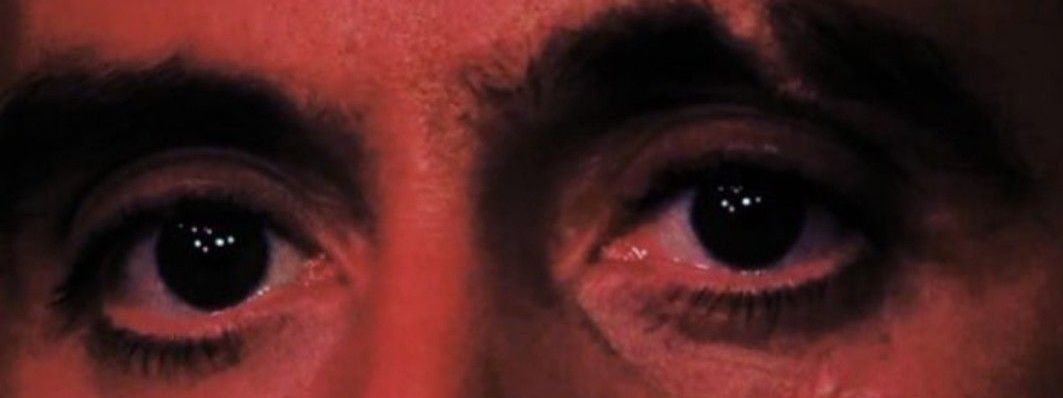You have just read a blog post written by Jason McIntosh.
If you wish, you can visit the rest of the blog, or subscribe to it via RSS. You can also find Jason on Twitter, or send him an email.
Thank you kindly for your time and attention today.

I had some vague awareness of Scarface as the movie that the producers of Grand Theft Auto and various tangential works took all the wrong lessons from. I quickly learned how it lends itself to adaptation into video-game power fantasies and similar media: the protagonist, unburdened by morals, levels up at an exhilarating speed. While most media deriving from Scarface choose to elide the fact of Tony Montana’s terminal-velocity crashdown in the end, watching this movie at a safely noninteractive remove let me quite enjoy his whole three-hour ultraviolent parabola.
The brutally simple story makes for an easy watch, with quite gorgeous cinematography in places. The scene where Tony visits his mother for the first time happens in front of a perfect pink-and-purple sunset over Miami’s silhouetted skyline, miraculously captured behind the actors as they stroll up a suburban driveway. It doesn’t look composited, given the technology of the day, and it struck me as an amazing filmmaking stunt all in itself. As a Florida resident for much of the 1980s, I did soak in the ambience of every exterior shot—even if it was mostly shot in LA.
Before any of that, though, the film shocked me with its positively Trumpian opening text crawl, which took as fact that the Mariel boatlift involved sinister Cuba intentionally stuffing a caravan flotilla with its worst citizens, sending “the dregs of its prisons” into the United States. According to Wikipedia, this does reflect the popular American view of this immigration wave, at the time. I take it as harbinger of the hateful reactionary politics that Reagan would soon enshroud the nation within—a phenomenon well underway by 1983. The boatlift sounds like a fascinating and complex subject worth learning more about with over 40 years’ hindsight, and this film’s blunt, matter-of-fact stance sure sounds naive today.
Also more than 40 years old: Al Pacino while shooting this movie, though one gets the impression that Tony Montana is supposed to be thirty or younger, per the apparent age of his cadre. (Also per the actor playing his mother, who Prime Video’s pause screen informed me was only four years Pacino’s senior.) Ain’t nothing wrong with this very common bit of Hollywood Movie Magic, of course, but I took especial note of it here because his true age clearly made it easer for him to look completely worn out and haggard during the film’s final act. So, that worked out!
(Writing the previous paragraph felt familiar, probably because I had similar observations about Laurence Olivier’s age-discrepancy with his character in Rebecca—only going in the other direction!)
Looking worse for wear than Mr. Pacino himself is the fact of his casting as a Cuban immigrant, thick accent and all. A choice like this seems flat-out impossible today (and not without reason), no matter how skilled the actor. “What were they thinking?” has no answer either, other than good old “The past is another country.” I can only reflect on how interesting it feels to realize one has commenced to collect these within the geography of one’s own lifetime.
Michelle Pfeiffer co-stars in her first major screen role, and while she looks fantastic (if a tad underdressed), most of the scenes with her feel like such a drag. Her character never rises above a two-dimensional gangster’s moll, having opinions but no will, like a mouthy housecat. Despite giving her a lot of screen-time, the film declines to explore the tragedy of her existence as a powerless trophy who keeps herself numb with endless drugs. At least she becomes a little more interesting towards the end, as the only person in Tony’s inner circle able to escape his final reckoning alive.
Three bits of culture that I didn’t know originated from this picture:
The Kill Bill-style super-zoom-in on the protagonist’s eyes with WHEEP WHOOP synth music in order to let us know they’re about to ape out on some poor schmuck. The first time this happens in Scarface, any modern audience will have to laugh, even though it’s suppose to be tense I guess? And it happens twice more after that!
Schwarzenegger’s eponymous Terminator character, who would first storm cinemas a year after Scarface’s premiere, undeniably stole his look from “The Skull”, a shotgun-toting Bolivian assassin who appears only in the final scenes of the movie to completely chew up the last bits of scenery.
Back in the 1990s I had a cadre of friends who all called each other “mang”—both in person and online, spelling it out that way in texts—and I just now realized they were all specifically imitating Al Pacino’s interpretation of a Cuban accent.
This article was also posted to the “movies” section of Indieweb.xyz.
To share a response that links to this page from somewhere else on the web, paste its URL here.